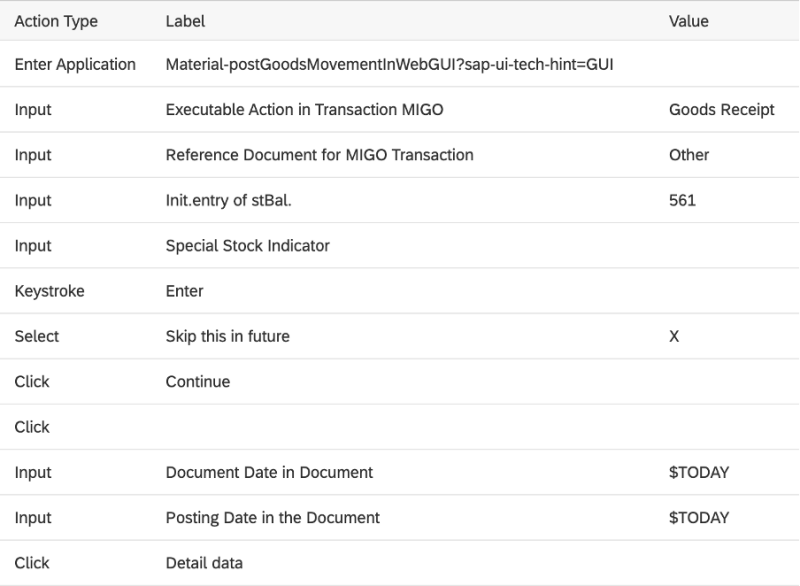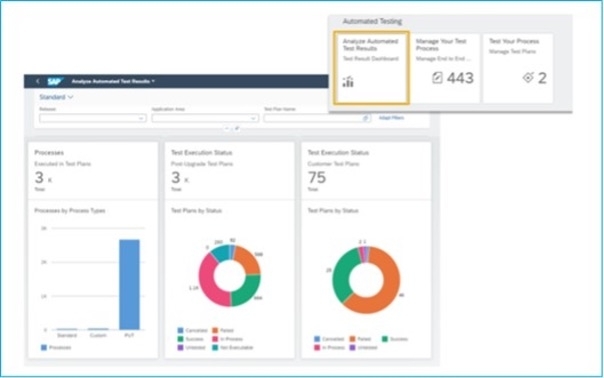
Automated Testing: What is it
What is Test Automation?
A so-called Test Execution Engine, the robot, performs all necessary interface interactions (action) for you to execute the required process steps.
Automated Testing is a robotic approach to validate your business processes in SAP S/4HANA Cloud. Automated Testing is not a simulation as the Test Engine executes all actions similarly as a real-life person does. The execution of these steps is done via test scripts in which each step is described. As part of the release updates, SAP provides a standard script for almost every best practice. This means that you do not have to build such scripts from scratch, but actually only add your own data to the script. Think of the materials, customers and suppliers. Provided, of course, that you stick to the standard. If your process deviates from a standard best practice, no problem. The scripts can be completely adapted or built from scratch.
SAP 4/HANA cloud gives you the ability to automatically test almost all of your business processes set up in SAP. The SAP Test Automation tool provides the foundation to manage, plan and execute your test scripts.

What is required to automate your processes?
Not much. Everything you need is standard available. The test automation tool is an integral part of the SAP 4/HANA Cloud. All necessary Test-apps are present and directly applicable.

Test App to manage your test processes
SAP S/4HANA Cloud includes a dedicated app for Automated Testing. In this app you manage the test processes (test scripts). Via this app you have:
- Access to all standard test processes (test scripts)
- The possibility to adjust existing test scripts
- Create new test processes
Test your processes: The actual testing of your processes and viewing the test results is done with this app. First, you add one or more test processes to a so-called test plan. Next, you feed the test processes with the (master) data to be used during testing. By working with data variants, it's possible to test different scenarios with just one test plan. These different scenarios can automatically be tested one after the other without manual interfering.
Analyze Automated Test Results: As the name suggests, this app allows you to analyse test results at a high level. Think about which tests were failed, stopped, in progress and successfully completed. This is displayed per process type (standard or custom). In addition, different cross-sections can be made. For example, per Release (2108, 2111, 2202 et cetera), per Application area (sales, manufacturing) and per test plan.

Impact testing tot Production System
Does the testing of my processes affect my working Production-system? No, not at all. In fact, the automation testing of processes does not take place in the P(roduction) system but in the Q(uality) system. New processes can therefore be extensively tested and as soon as they are found to be 100% good, the process can be transported to your P-system. The test engine itself is not on your Q-system but on a separate tenant. The test engine actually logs in on your Q-system to test the system as a user.
What is Test Automation not?
After you have started using test automation, you will quickly experience its added value. However, this automated testing technology is not suitable for all situations.
Automated Testing is not checking your master data
The test automation tool mainly tests your business processes in SAP quickly and accurately. Although it uses your (master) data to perform the automated tests, it is not suitable to check your master data itself. Simply put, it is designed to test your processes and not large amounts of data.
Automated Testing is not replacing the User Acceptance Test
As the name suggests the human aspect is an essential component of User Acceptance Test (UAT). Although test automation could technically do it, it is important to let actual users perform this test. On the one hand, they can better recognise the sense and nonsense of a process (step). On the other hand, they get to know the system or the new process thoroughly. So, even though it is not the nicest part of the project, it is better to have it done by human hands.
Automated Testing is not the ideal path for complex customized process flows
The possibilities of customising existing processes are endless. In case of a custom process with many scenarios, you will have to ask yourself if the time needed to automate such test processes outweighs the time needed to test the process manually. Manual testing of processes is and remains more flexible than automating them.